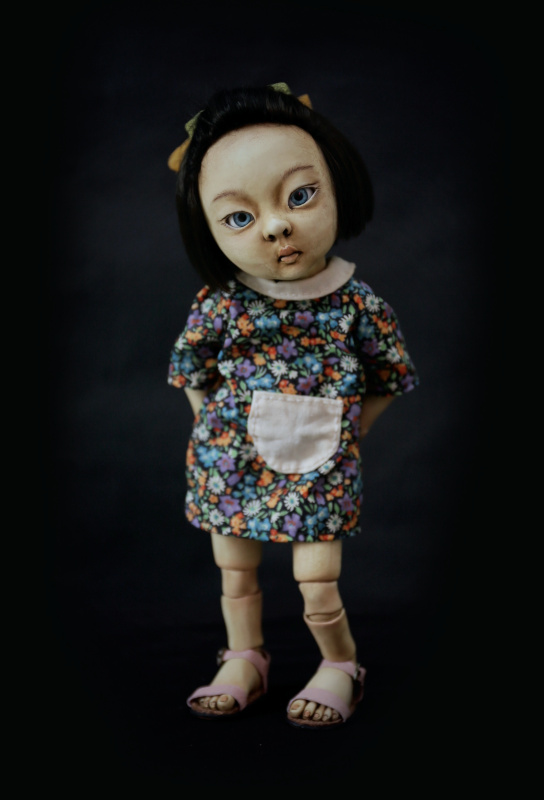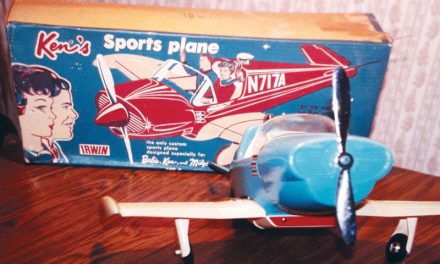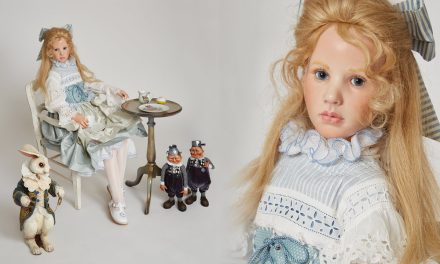
By Pam North
Dolls come in all styles and sizes, and the very best ones are those that have their own unique charm and precious innocence, the ones that look like no others in the doll world. They seem less like dolls to be purchased and more like precious little people to be adopted and cherished. Such are the creations of Liliya Volkova, a resident of Moscow, Russia, and a superb dollcrafter.
Volkova grew up as part of a small family including her parents and younger sister. “As a child, I was very ordinary, like everyone else,” she related. “My family was not wealthy, so I had few toys. I can’t say I liked to play with dolls, but treated them casually. My mother told me that at about age 2 I had a favorite doll named Katya, which I never parted with, so perhaps this is something subconscious.”

When she grew up and went to university, she decided to study psychology. “It was interesting for me to understand people, and to help them overcome difficulties,” she said. Volkova worked as a child psychologist until she was about 30 years old and pregnant with her second child. While on maternity leave, she realized that she didn’t wish to return to her former profession, but rather to spend more time with her husband and two children. So she began to think about what she really wanted to do.
“I always have admired people who can create something with their own hands,” she said, “and I asked myself why I couldn’t do that also, so I tried.” At first she sewed simple dolls, but she yearned to do something more challenging, so she switched to making dolls with polymer-clay heads, arms, and legs on textile bodies.
She searched the internet for techniques and tips for making such dolls, trying to mesh that information with her own emerging style. But she found some of it difficult to understand, so her finished results didn’t measure up to the appearance she was trying to achieve. “I wanted my dolls to be as if they were alive,” she said, “with the correct anatomy, so I realized it was time to start learning anatomical modeling from an artist to enable me to make even more complex dolls.
“I found a master from whom I could learn how to make a ball-jointed doll [BJD]. I always pay great attention to all the little things in the body of the doll so I can mold every detail; this is very important to me. Therefore, I never stop studying the anatomy of the body, with all its structures and features.”
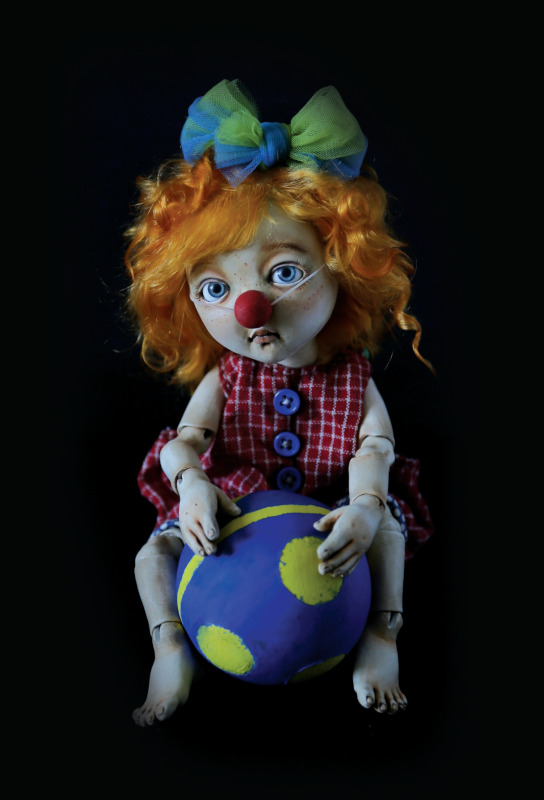
She continued to pursue training in her chosen craft, learning from other gifted doll artists, and she soon developed new skills and techniques for her to evolve with her own distinctive style. On average, it takes Volkova about one month to make one doll. She uses no pre-made forms, sculpting each doll individually herself from the very beginning, so it is impossible that there are ever two identical dolls.
“Every doll is made absolutely from scratch, every body and head sculpted anew,” she said. “I do not work to order; my dolls come from my heart. I don’t have a goal to make as many as possible; I want to preserve their uniqueness so that the collector who buys one will know for sure that he has the only one.”
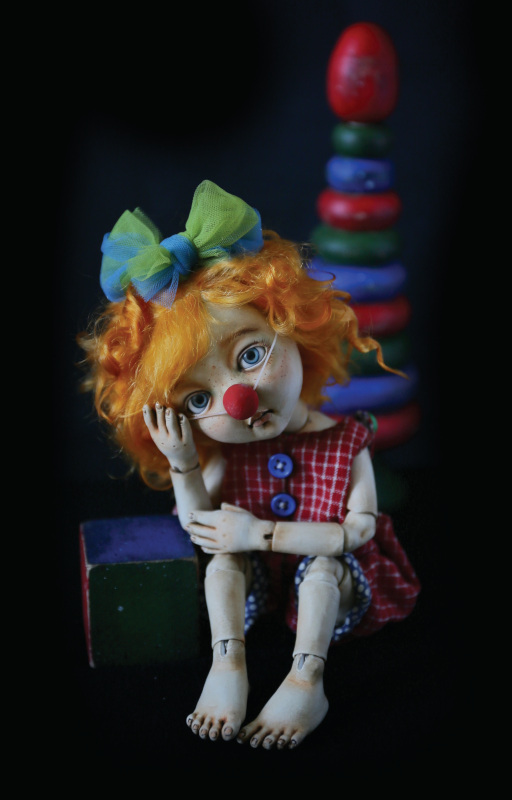
She obtains the eyes for her dolls on a special-order basis from a skilled craftsman who makes each pair to her specifications. They’re made of a special polymer clay which is painted and varnished to look absolutely realistic. She crafts her dolls’ wigs from mohair or alpaca. She is a perfectionist, never skimping on the quality of materials. Clothes and shoes are removable to make the dolls more realistic and adaptable.
Still desiring to further evolve, Volkova recently studied how to work in porcelain, an aspect of dollmaking that she finds particularly exciting and challenging. “Porcelain is noble. The porcelain doll gains even more collectible value. In addition, it is very sturdy, and it can last for many, many years. I now am working on my first porcelain doll, and it’s a very long and complicated process, since this technology is something completely new for me.
“There are many subtleties and nuances to learn, and I am fully engaging in that process. I made a master model, plaster molds, and now I am casting. Working with dolls is never easy. There constantly are difficulties to overcome, and often what is intended does not work out the first time, so it takes lots of patience and endurance in order to solve and overcome problems.
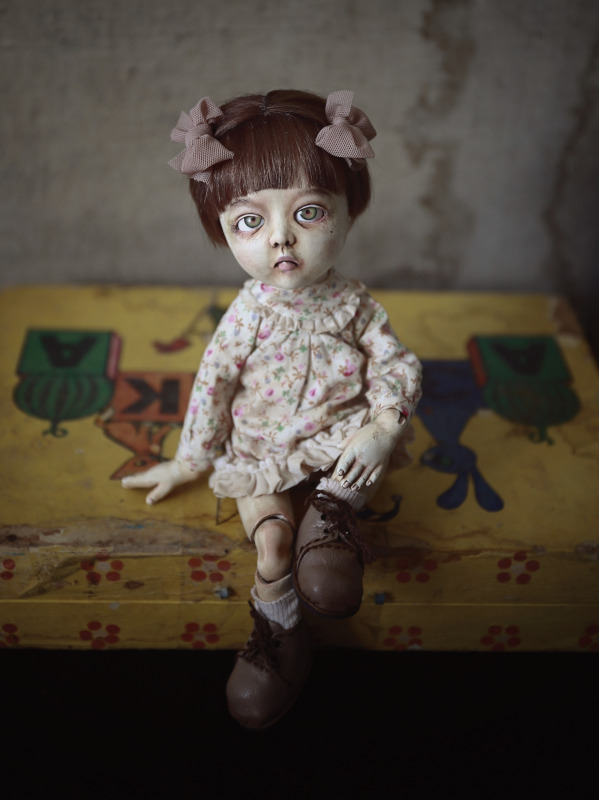
“There hasn’t been a doll yet with which I was entirely satisfied, but this is what makes one learn and grow, so one cannot be deterred. I have come a long way in several years, from my simplest dolls at the beginning to the more intricate ones that I make now, and I think there is still much more for me to learn and understand.”
New ideas come readily to her. “I’ve never had any problem with inspiration. I love looking at old childhood photos — children are so cute! There are always several images in my head of dolls I want to make. Sometimes I just begin sculpting without even thinking what the result will be. What I love most is the moment when the doll is almost ready, when the image is finally complete.”
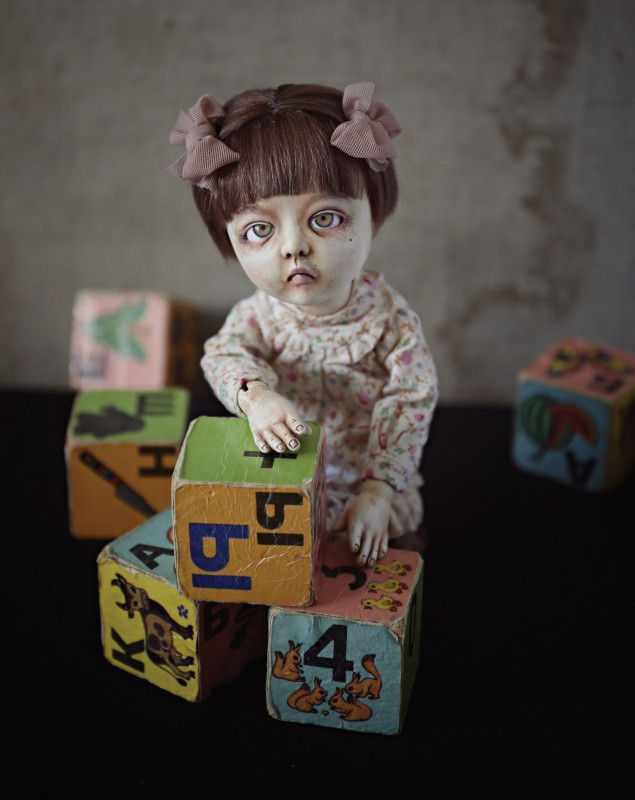
She manages to craft her dolls without the luxury of a real workroom she can call her own. “Unfortunately, I do not have a large workshop, just a table and a large cabinet that contains all the materials and tools that I need. Very often I like to work in front of an open window.” She sells her dolls through Facebook, Etsy, and Instagram.
Volkova hasn’t yet been able to participate in exhibitions, since her family chores take up much of her time, but she hopes to do so in the future. “Shows are held annually in Russia,” she said. “Preparing for an exhibition requires a lot of time and effort, and I don’t want to take that away from my family. I plan to participate a little later, when my children grow up a little more.

“In the meantime, I talk about my dolls on Facebook, Etsy, and Instagram. I always try to meet customers and build our communication on complete honesty and trust. This is my name and reputation, which I value very much. I plan to keep improving in my business, and I want my dolls to keep getting better, so that [they] can be inherited treasures, like jewels.
“Dolls are needed not only for children and their play, but also to satisfy adults. I admire dolls myself, and never tire of them. Dolls have become a very significant part of my life. When I sculpt a doll, I feel I am creating something alive, and realizing that I can do this with my own hands brings me happiness. You even could say that every doll is my child. It comes from within me, conveys what I feel and experience, and is a part of me. So I like to make dolls that look like children, since, after all, a little girl or boy lives inside each one of us.”
Find out more at Liliya Volkova’s Etsy store

